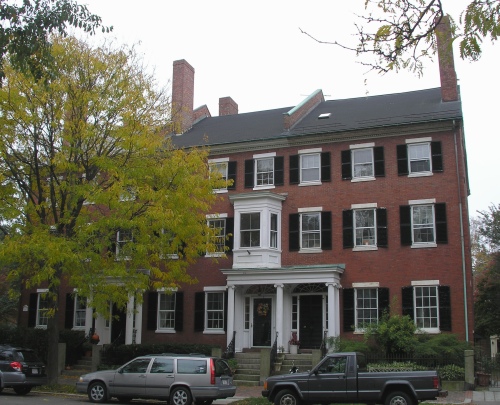Allen-Osgood-Huntington Triple House (1828)

For my 101st Salem post I present the Allen-Osgood-Huntington Triple House, located at 31-33-35 Chestnut Street in Salem. It was begun in 1828-1829 by Pickering Dodge and completed after 1833 by his son-in-law, John Fiske Allen, a horticulturalist who lived in No. 31. As described in Fisk Cousins and Phil M. Riley’s The Colonial Architecture of Salem (1919):
there, in 1853, for the first time in New England, [Allen] grew and brought to flower in his greenhouse the Victoria regia, the great water lily of the Amazon, from seed obtained of Caleb Cope, of Philadelphia. The following season Mr. Allen enlarged his greenhouse and tank and obtained more seed from England, including that of the Amaryllis, Nelumbium and other tropical species of lilies which thrived and formed a rare collection much admired by many visitors. Mr. Allen published the results of his observations on the Victoria regia in a beautiful folio volume, finely illustrated by W. Sharpe from specimens grown in Salem. . . . Previous to Mr. Allen’s occupancy the house was for a time the home of Nathaniel Silsbee, United States senator from 1826 to 1835.
The middle house (No. 33) had various owners, including Captain Charles M. Endicott of the ship Friendship. In a famous incident that occurred in 1831, the ship was captured by Malays off the coast of Sumatra and then retaken in a fierce battle. In 1864, the house was purchased by George P. Osgood, whose family remained there until the 1940s. The bay window on this middle house is a Victorian-era addition. The house at the western end (No. 35) was home to three mayors of Salem: Charles W. Upham (served 1852-1853), who wrote the classic work Salem Witchcraft (1867), Asahel Huntington (served 1853-1854) and his son, Arthur L. Huntington (served 1885).